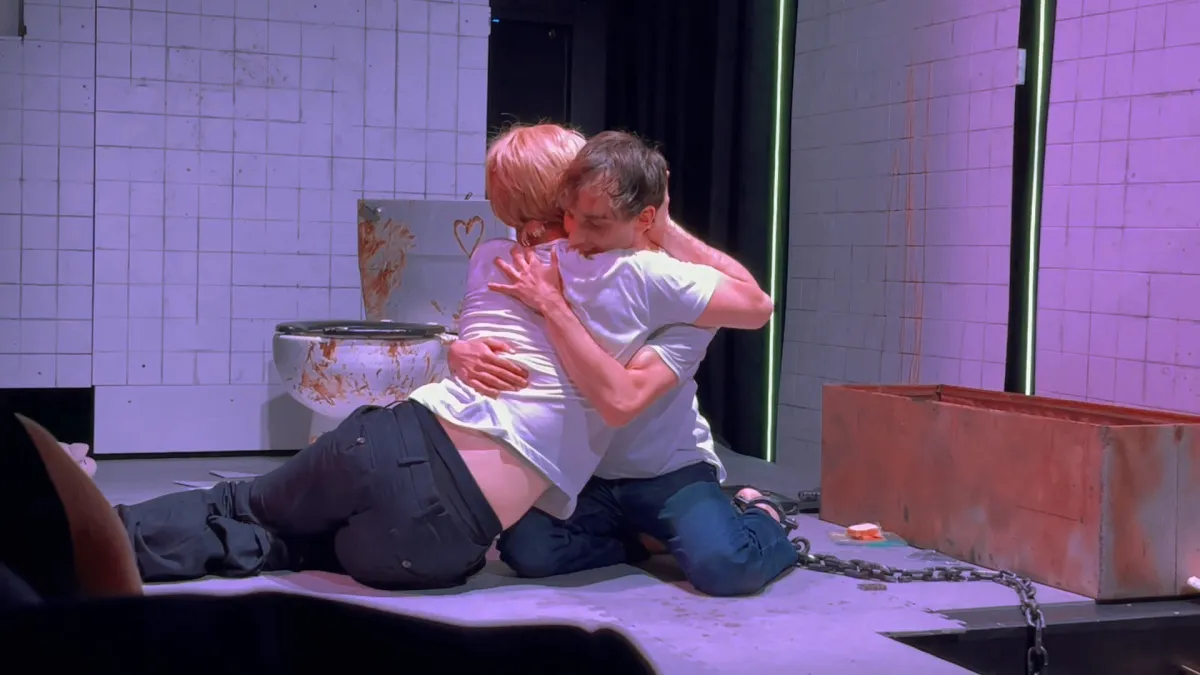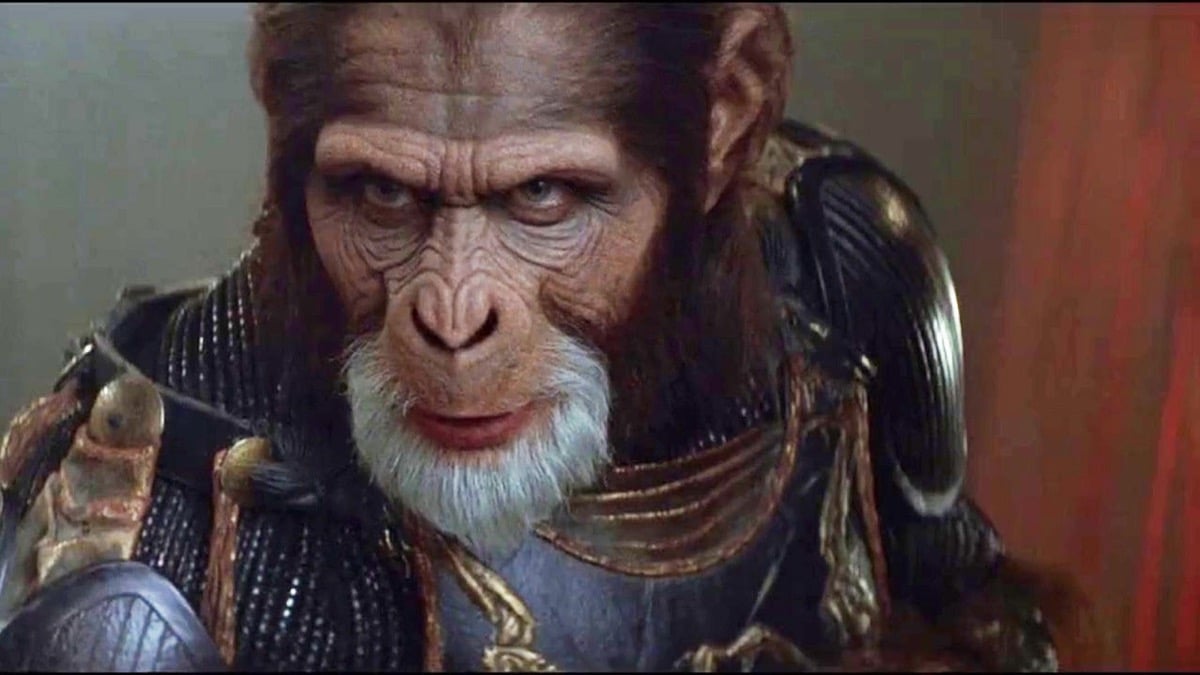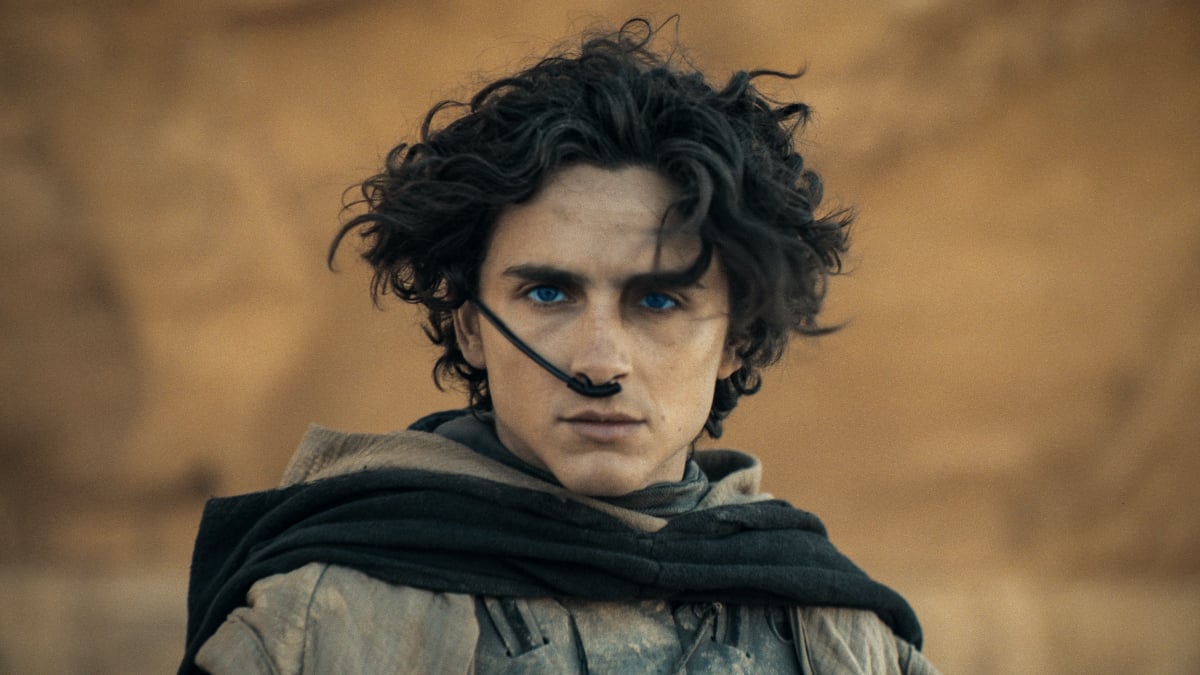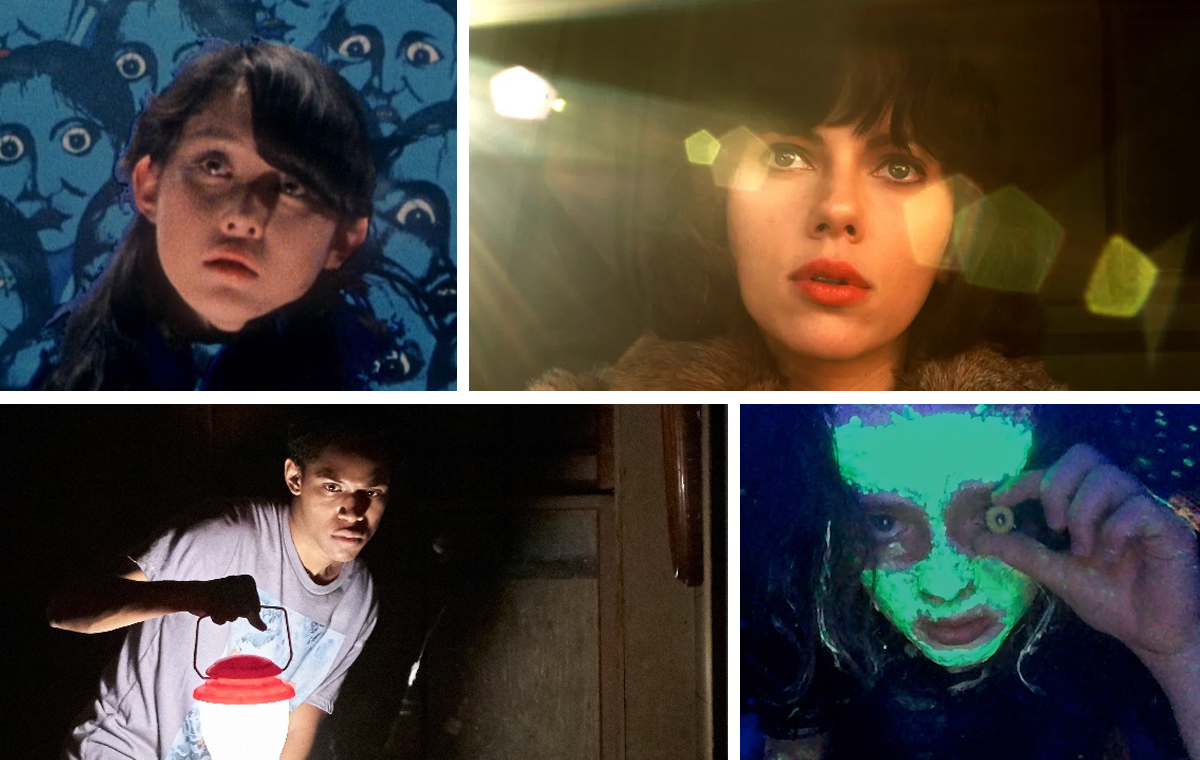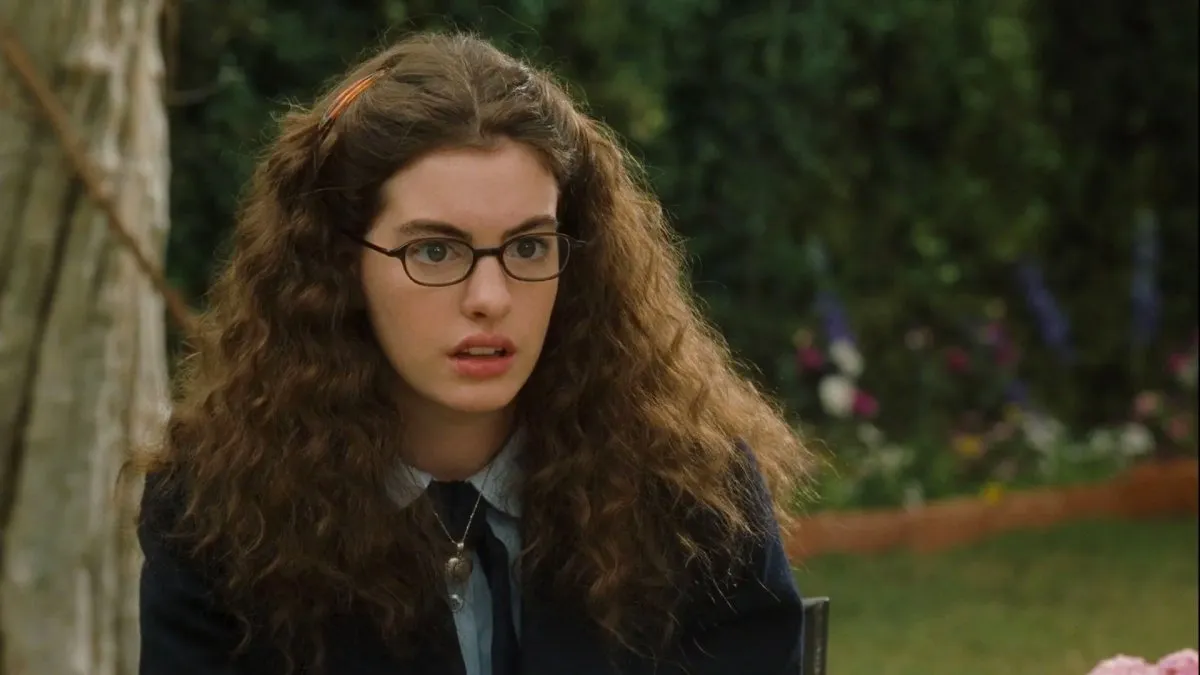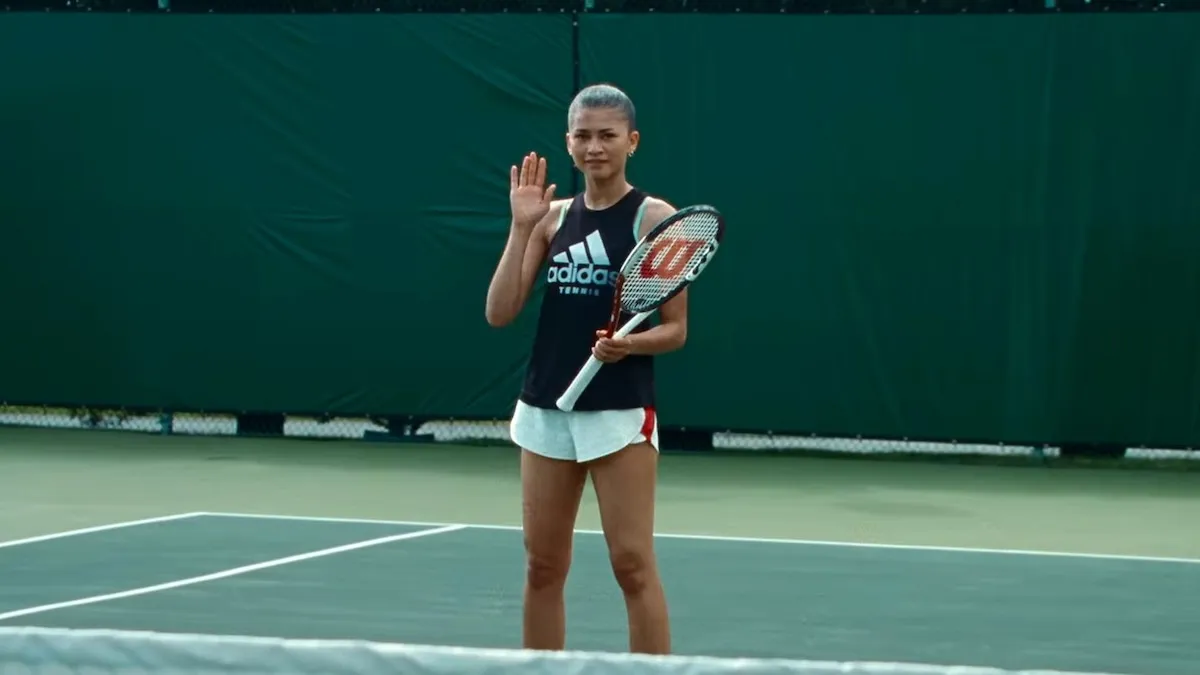Celebrating its 19th birthday yesterday, Saw is easily one of the most influential horror films of the 21st century—and now it’s found new life on the stage. Starring Danny Door, Jill Owen, and Adam Parbhoo, Saw the Musical: The Unauthorized Parody of Saw reimagines James Wan and Leigh Whannell’s seminal horror film as a musical parody.
Earlier this month, The Mary Sue had the opportunity to speak with Saw the Musical creator and lead producer Cooper Jordan about bringing such an unorthodox musical parody to life.
(This interview has been edited for length and clarity.)
The Mary Sue: Do you remember the first time you encountered the Saw franchise? What was your point of contact with the original film?
Cooper Jordan: I was in junior high at the time… Aunt Linda recommended it, and then my dad and I watched it. I was watching very, very inappropriate things—I was a huge Austin Powers fan as a kid, things like that. So much to my mother’s chagrin, my father let me watch it around sixth grade. I remember seeing it and being so moved by it—going to lunch the next day and campaigning for it to be nominated for Oscars.
TMS: Twelve-year- old Cooper was right!
CJ: I was so amazed by it and that was the first time I ever saw it. My dad took me to see Saw II in theatres the next year.
TMS: So you develop the affinity as a kid—at what point down the line did the concept of a Saw parody musical pop up? When did your love for the film become “Oh, I might actually make this thing happen”?
CJ: I moved to New York at 18, and became a producer when I was 19— I had my own theater by the time I was 23 or 24, something like that. There were all sorts of parodies coming into the theatre—50 Shades The Musical, Puffs the Harry Potter parody, etc. So a bunch of parodies came into the theater, and I just remember being like, “This (Saw) is one set.” Leigh Whannell, who wrote the movie, has talked about how close Saw already is to a play because it’s just the one location.
It had been a huge thing for me and my sister (who wrote the book), we even bonded on it growing up. Long story short, I said “Zoe, I really really want to do this as a play.” So I wanted to do it probably as far back as 2012, and I just never got to—we started writing and it basically got put on the shelf. Then, in 2020, there was a theater called the Adrienne that I was producing at in Philadelphia, and they were suffering like every other theater. The guy who owned it came to my house in Atlantic City to talk to me about putting new things in, to keep it alive, and I said “You know what, I’ve always want to do this musical”, because he was offering me October.
I’d always wanted to do it, and the musical’s only three people, so no matter what happens it’s not gonna be extremely expensive. So I called my sister, I said “Can you finish this in a month?” and she did, and we brought on a composer/lyricist. I said “If you guys want to write this in four or six weeks, then we can produce this,” and they did. It was lightning in a bottle, and we were amazed with what we had.
TMS: It couldn’t have come at a better time, either— you’re coming to off-broadway just as the 10th film is hitting theatres. That’s perfect kismet. You mentioned sharing an affinity for Saw with Zoe—what was the process like working with your sister?
CJ: We’d never done it before, but it was shockingly extremely easy, and wonderful. We looked at each other like “Why haven’t we done this our whole lives?” because I had spent 10 years in the business working with other people, and being so frustrated, and this was so fantastic. I love my sister more than anything, she’s so important to me.
So I let her do whatever she wanted—she almost loves the films more than I do. When I was watching Saw as a kid with my father, she would sneak under the table—and she’s eight years younger than me. She had to be, oh God, like six or seven. Now of course she wants to be a horror screenwriter.
TMS: We’ve seen horror movies come to Broadway as more traditionally dramatic shows before, like Carrie. How early in the process did you know your Saw musical was going to be a parody and not something more traditional?
CJ: That wasn’t something we thought about—we knew we weren’t going to be able to license it. To my knowledge, Lionsgate hasn’t been involved in theater on a professional level before, so I wasn’t even thinking that they would want to be involved in any way. So, right from the beginning, we knew what it was going to be, and honestly I thought it would just be a parody of the film, I didn’t quite think we’d be doing what we’re doing with it now. But we wrote it, and it’s sort of taken on a life of its own.
TMS: The Saw films have a very particular place in pop culture because of how brutal and violent they are, but the musical reframes the story as a meet-cute romance. Where did that idea come into the mix?
CJ: Honestly, it wasn’t anything we thought was even going to happen. I certainly didn’t have it in my head, and I know my sister wasn’t pushing for anything like this—there were a couple of elements of Saw that are a little ridiculous, and we figured we could make fun of silly things like sawing off their feet instead of just hitting them with the toilet tank, a bunch of little things like that.
But then she (Zoe) rewatched it and said to me, “Cooper, they love each other,” and I was like “No, what are you talking about?” and I watched it back, having seen it so many times already, and was like “Oh my god, they’re in love.” So my sister threw in a few jokes about it, and then our composer and lyricist really went to town with it.
Their relationship (Adam and Lawrence’s) was always a major conflict of the story, so we didn’t really think much of it, but then there was this massive, massive online community of people who have been rooting for this to happen. It was something we sort of stumbled on to, I swear to God we didn’t plan for it at all, but it’s clearly something the fans wanted.
TMS: As a fan, the romance element was certainly what drew me to the musical when I first heard about it.
CJ: It just sort of fell into place. This was something that fans have been rooting for for years, and we realized that the theme of the movies (and the theme of the show) is living the life you love, and cherishing your life— that’s what Jigsaw is teaching in all of his sick traps. It’s about people actually living their life how they want to, loving the people they want to. So we went down that route, I think we’re commenting on it, and I think that’s beautiful.
TMS: I don’t know if you’ve seen the shenanigans the Saw: The Musical Twitter account is getting up to, but there have been jokes about musicals for other romances in the Saw films—Lynn Denlon and Amanda, Hoffman and Strahm, etc. What would a Strahm/Hoffman parody musical look like?
CJ: We would love to do it! My sister keeps joking that she wants to do Saw VI the musical—God, I would love nothing more. My sister is a huge fan of Costas Mandylor, I think she’s seen all of his movies, it’s really wild. What would that musical look like? I don’t really know… Saw V, that’d be a lot of fun to play with, there’s a lot to do there. What I’d love to do is Saw: The Sequel: The Musical, but it would probably be maniacal to do all nine movies in one show.
TMS: Speaking of the scope of the show, something that really struck me about Saw: The Unauthorized Musical Parody was (as you’ve mentioned) the fact that you only have three actors, all playing multiple roles. What was the inspiration behind that?
CJ: I was like “This is brilliant, this is a producer’s dream!” It’s one set, two guys in the bathroom, which is how they were originally able to produce the movie—they did it on virtually no budget, and that’s kind of what we felt like going into Philadelphia. But doing it with three people made it much, much easier.
We were going to do it with two, but then it became too low budget, and we obviously didn’t want to cut Amanda. We wanted to have her taken more seriously with what she’s doing on stage, and have her be a central part of the story, because her significance is her winning the trap—that’s why she’s in the first movie. And there aren’t enough roles in musical theater for women, so we said let’s put Amanda in, and we stayed true to the movie, which is what you have to do with the theatrical parody by definition.
TMS: It’s such a funny show—so many great comedic moments, you’ve got Doctor Gordon dancing with a blow-up doll, ridiculous stuff like that. But then you’ve also got songs like “I’ve Never Smiled So Wide”, and Amanda brings these really beautiful, grounded moments to the show. How do you navigate balancing comedy with drama in a parody like this?
CJ: That’s a great question, but it’s not really my department. My sister and I talked about this a week ago, about how Amanda is the emotional core of the story, about the overarching theme of what it means to “win”, about what Adam and Lawrence are fighting for the whole show. I think within the context of her winning the game, we’re able to illustrate what that means for the two of them, even if one of them obviously doesn’t make it out.
It provides hope. It gives them a clear glimpse at what they’re hoping for, if they succeed, and I think that’s a beautiful thing. But again, my sister is really the one who crafted Amanda’s theme throughout the show—originally, I wanted to do it with just the two guys. But having Amanda in it now, I can’t ever see the show happening without her.
TMS: We talked about all sorts of musical inspirations for the show, including Avenue Q, which of course made use of puppetry. With Billy the Puppet, it’s kind of a no-brainer that when you bring him to the stage, there’s got to be some kind of puppetry involved. How did that process develop in regards to the specific kind of puppets being used?
CJ: That was tricky, because we came in using a public domain puppet image from a wonderful artist. We contacted the person to see if we could use that image, and they were thrilled with it. So I sent it to a friend of mine who works with puppets, I said “Do you have time to make this?” and she said “No.” So we talked to six other people, who also said no, and then I went back to her, and she said “Let me call Julia”. She called Julia Darden, who’s been fabulous, and she built it in five days.
Because we basically had four months to write and produce the show, we had no idea what we were going to do with the out of town tryout, but again, it was lightning in a bottle. The puppet came in and we were like “Oh my God.” We definitely took inspiration from Avenue Q, the puppet is very muppet-ish in that way.
TMS: I feel like it adds to the insanity of it all in such a beautiful way.
CJ: Oh, it does. It’s definitely the most fun part of the show, I think.
TMS: And, of course, I’d be remiss if I didn’t ask you what your favorite Saw trap is.
CJ: Yes. Oh my God. That is an excellent question. I mean, my favorite movie is Saw VI. I hate to say this one, because it’s really not a fair trap to the people involved, but I love the carousel trap in Saw VI… I’m trying to think what else. I actually love the Saw X trap where it’s a dream sequence—the sticky fingers trap. I love that. The eyeball vacuum. I absolutely adore it.
Saw The Musical: The Unauthorized Parody of Saw runs through January at the AMT Theater in New York. Tickets can be purchased here.
(featured image via Saw: The Unauthorized Parody Musical)



